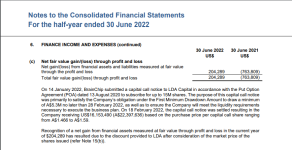As the share price languishes the following question might reasonably be asked:
If a blind poll of genuine investors were to be presented with just the following eleven facts would they conclude the target company was oversold at 19 cents a share (giving a market cap of $340 million) when the addressable market for their technology is in the billions of dollars?
FACT ONE
TATA ELXSI a member of the TATA GROUP is a company with over 12,000 employees and is an announced partner of the target company for the stated purpose of driving the adoption of the target company’s technology into medical and industrial use cases.
FACT TWO
TATA GROUP is a global company with over 600,000 employees across 100 subsidiaries and boasting a research arm TATA Consulting Services with over 10,000 employees which has been investigating the target company’s technology since at least 2019 publilshing papers and engaging in live demonstrations of the target companies technology and recently making public the following comparison of the target companies technology with Nvidia Jetson TX2:
Abstract:
Emergence of small satellites for earth observation missions has opened up new horizons for space research but at the same time posed newer challenges of limited power and compute resource arising out of the size & weight constraints imposed by these satellites. The currently evolving neuromorphic computing paradigm shows promise in terms of energy efficiency and may possibly be exploited here. In this paper, we try to prove the applicability of neuromorphic computing for on-board data processing in satellites by creating a 2-stage hierarchical cloud cover detection application for multi-spectral earth observation images. We design and train a CNN and convert it into SNN using the CNN2SNN conversion toolkit of TARGET COMPANY'S neuromorphic platform. We achieve 95.46% accuracy while power consumption and latency are at least 35x and 3.4x more efficient respectively in stage-1 (and 230x & 7x in stage-2) compared to the equivalent CNN running on Jetson TX2.
FACT THREE
This published research relates to the target companies first generation technology which has in the last ten months been advanced with the release of a next generation chip to show its versatility to be produced across different major foundries and a further generation technology IP has been recently released which is said to have increased the target company’s technology lead from about 3 years to over 5 years against all competitors.
FACT FOUR
The target company has a comprehensive PATENT portfolio of 17 granted patents including its technologies foundational patent with a further 30 filed patents awaiting approval at last report.
FACT FIVE
The target company has five quarters of cash runway and further guaranteed right to call on additional funds from LDA Capital under a put option.
FACT SIX
Multiple industry and government partnerships and at least 5 University research/teaching partnerships across the USA and Europe.
FACT SEVEN
Product coming to market from Renesas and VVDN during the next six months.
FACT EIGHT
A European aerospace and robotics company EDGX and an Australian aerospace robotics company ANT61 both utilising the target company’s technology in already developed prototypes with ANT61 having announced a first launch date of early 2024.
FACT NINE
A startup Circle 8 and a company AVID Group with research partnerships with the University of Technology Sydney and the CSIRO and the US Department of Environment has partnered with the Target Company to market an already prototyped Smart Bin for plastic recycling.
FACT TEN
Jean-Luc Chatelain, Global Chief Technology Officer at Accenture an admitted fan of neuromorphic computing has cited the Target Company’s latest IP describing it as ‘innovating in a big way to bring GenAi and LLM to the Edge with their 2nd generation platform.’
FACT ELEVEN
The Target Company does not stand alone in publicly proclaiming the advantages of its technology as highlighted by the following selection of quotes on the release of their 2nd generation platform:
“XXXXXX and its unique digital neuromorphic IP have been part of IFS’ Accelerator IP Alliance ecosystem since 2022,” said Suk Lee, Vice President of Design Ecosystem Development at IFS. “We are keen to see how the capabilities in XXXX’s latest generation offerings enable more compelling AI use cases at the edge” Suk Lee, VP Design Ecosystem Development, Intel Foundry Services
“Edge Impulse is thrilled to collaborate with XXXXXX and harness their ground breaking neuromorphic technology. XXXX’s 2nd generation platform adds TENNs and Vision Transformers to a strong neuromorphic foundation. That’s going to accelerate the demand for intelligent solutions. Our growing partnership is a testament to the immense potential of combining Edge Impulse’s advanced machine learning capabilities with XXXXXX’s innovative approach to computing. Together, we’re forging a path toward a more intelligent and efficient future,” said Zach Shelby, Co-Founder and CEO at Edge Impulse. Zach Shelby, Co-Founder and CEO, Edge Impulse
“XXXXXX has some exciting upcoming news and developments underway,” said Daniel Mandell, Director at VDC Research. “Their 2nd generation XXXX platform provides direct support for the intelligence chip market, which is exploding. IoT market opportunities are driving rapid change in our global technology ecosystem, and XXXXXX will help us get there.” Daniel Mandell, Director, VDC Research
“Integration of AI Accelerators, such as XXXXXX’s XXXX technology, has application for high-performance RF, including spectrum monitoring, low-latency links, distributed networking, AESA radar, and 5G base stations,” said John Shanton, CEO of Ipsolon Research, a leader in small form factor, low power SDR technology. John Shanton, CEO, Ipsolon Research
“Through our collaboration with XXXXXX, we are enabling the combination of SiFive’s RISC-V processor IP portfolio and XXXXXX’s 2nd generation XXXX neuromorophic IP to provide a power-efficient, high capability solution for AI processing on the Edge,” said Phil Dworsky, Global Head of Strategic Alliances at SiFive. “Deeply embedded applications can benefit from the combination of compact SiFive Essential™ processors with XXXXXX’s XXXX-E, efficient processors; more complex applications including object detection, robotics, and more can take advantage of SiFive X280 Intelligence™ AI Dataflow Processors tightly integrated with XXXXXX’s XXXX-S or XXXX-P neural processors.”
Phil Dworsky, Global Head of Strategic Alliances, SiFive
“Ai Labs is excited about the introduction of XXXXXX’s 2nd generation XXXX neuromorphic IP, which will support vision transformers and TENNs. This will enable high-end vision and multi-sensory capability devices to scale rapidly. Together, Ai Labs and XXXXXX will support our customers’ needs to address complex problems,” said Bhasker Rao, Founder of Ai Labs. “Improving development and deployment for industries such as manufacturing, oil and gas, power generation, and water treatment, preventing costly failures and reducing machine downtime.” Bhasker Rao, Founder, Ai Labs
“We see an increasing demand for real-time, on-device, intelligence in AI applications powered by our MCUs and the need to make sensors smarter for industrial and IoT devices,” said Roger Wendelken, Senior Vice President in Renesas’ IoT and Infrastructure Business Unit. “We licensed Akida neural processors because of their unique neuromorphic approach to bring hyper-efficient acceleration for today’s mainstream AI models at the edge. With the addition of advanced temporal convolution and vision transformers, we can see how low-power MCUs can revolutionize vision, perception, and predictive applications in a wide variety of markets like industrial and consumer IoT and personalized healthcare, just to name a few.”
Roger Wendelken, Senior Vice President IoT and Infrastructure Business Unit, Renesas
“We see a growing number of predictive industrial (including HVAC, motor control) or automotive (including fleet maintenance), building automation, remote digital health equipment and other AIoT applications use complex models with minimal impact to product BOM and need faster real-time performance at the Edge” said Nalin Balan, Head of Business Development at Reality ai, a Renesas company. “XXXXXX’s ability to efficiently handle streaming high frequency signal data, vision, and other advanced models at the edge can radically improve scale and timely delivery of intelligent services.” Nalin Balan, Head of Business Development, Reality.ai, a Renesas Company
“Advancements in AI require parallel advancements in on-device learning capabilities while simultaneously overcoming the challenges of efficiency, scalability, and latency,” said Richard Wawrzyniak, Principal Analyst at Semico Research. “XXXXXX has demonstrated the ability to create a truly intelligent edge with XXXX and moves the needle even more, in terms of how Edge AI solutions are developed and deployed. The benefits of on-chip AI from a performance and cost perspective are hard to deny.”
Richard Wawrzyniak, Principal Analyst, Semico Research XXXXXX’s cutting-edge neuromorphic technology is paving the way for the future of artificial intelligence, and Drexel University recognizes its immense potential to revolutionize numerous industries. We have experienced that neuromorphic compute is easy to use and addresses real-world applications today. We are proud to partner with XXXXXX and advancing their ground breaking technology, including TENNS and how it handles time series data, which is the basis to address a lot of complex problems and unlocking its full potential for the betterment of society,” said Anup Das, Associate Professor and Nagarajan Kandasamy, Interim Department Head of Electrical and Computer Engineering, Drexel University. Anup Das, Associate Professor, Drexel University
My opinion only so DYOR
FF






